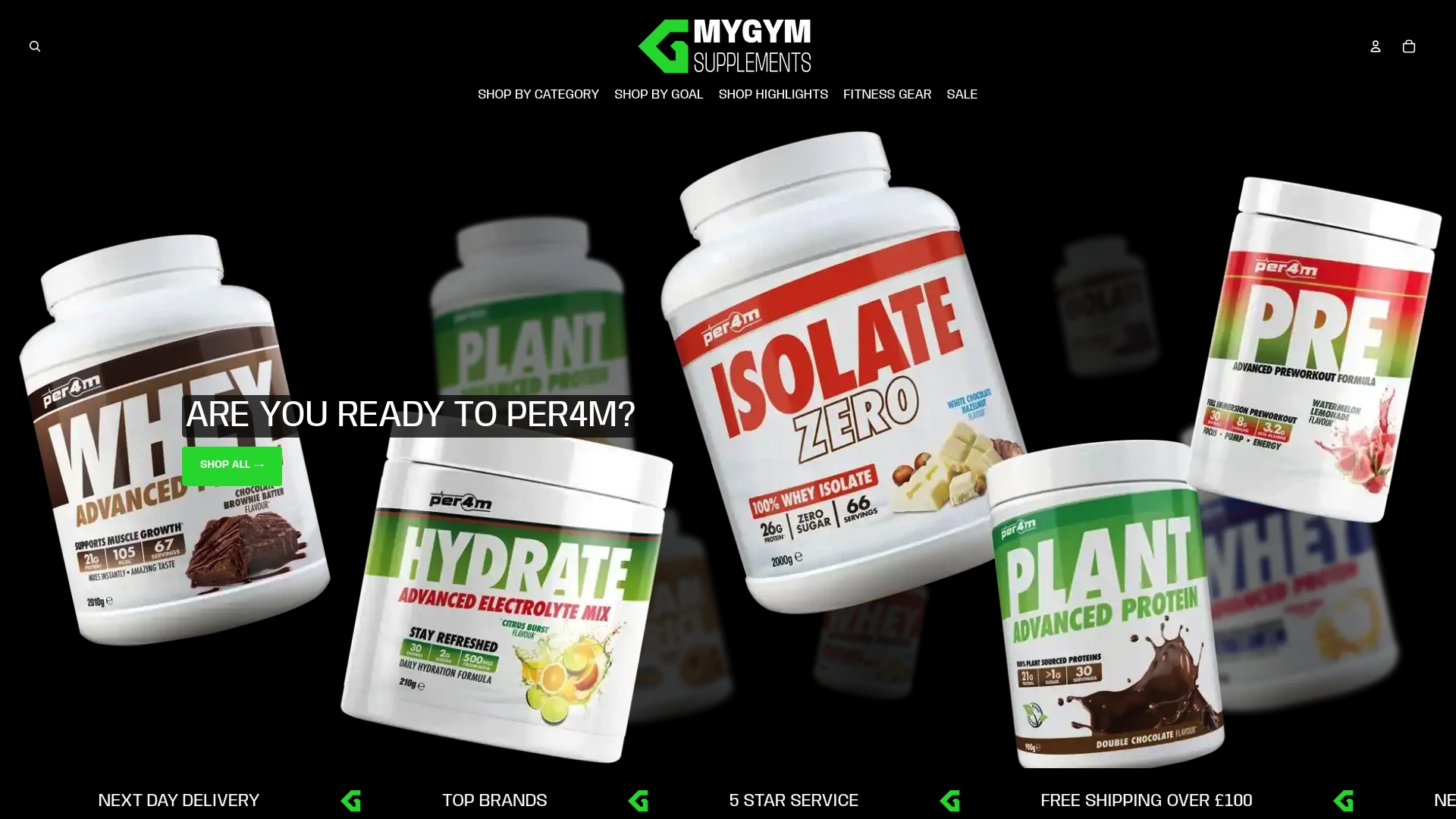Nearly every serious athlete searches for a way to recover faster, train harder, and see better results. Citrulline malate has gained attention for its unique ability to increase blood flow and fight muscle fatigue. With research showing enhanced endurance and faster recovery, this supplement is sparking interest among fitness fans and professionals alike. If you want to understand what sets citrulline malate apart and whether it lives up to the hype, here’s what you need to know.
Table of Contents
- What Is Citrulline Malate? Core Definition And Origins
- How Citrulline Malate Works In The Body
- Key Benefits For Athletes And Fitness Fans
- Proper Dosage, Timing And Usage Recommendations
- Potential Side Effects And Safety Guidelines
- Citrulline Malate Vs. Other Amino Acid Supplements
Key Takeaways
| Point | Details |
|---|---|
| Citrulline Malate Definition | Citrulline malate combines L-citrulline and malate to enhance exercise performance and recovery. |
| Mechanism of Action | It boosts nitric oxide production for improved blood flow and ATP production for energy during workouts. |
| Key Benefits | Athletes can expect improved endurance, reduced muscle soreness, and faster recovery. |
| Dosage Recommendations | Effective doses range from 6 to 15 grams, ideally taken 60 minutes before exercise for optimal effects. |
What Is Citrulline Malate? Core Definition And Origins
Citrulline malate is a powerful performance-enhancing compound that combines two key ingredients: L-citrulline, a non-essential amino acid, and malate, an important metabolic intermediate. According to research from open-access.bcu.ac.uk, this compound is increasingly popular as a dietary supplement designed to boost exercise performance and accelerate recovery.
The origins of citrulline trace back to a fascinating scientific discovery. Wikipedia reveals that citrulline was first isolated from watermelon in 1914 by Japanese researchers Yatar4d Koga and Ry4d 4ctake. Originally identified as a key component in the urea cycle, citrulline plays a crucial role in helping the liver detoxify ammonia, a potentially harmful metabolic waste product.
Understanding the biochemical composition of citrulline malate provides insight into its potential benefits. The amino acid L-citrulline serves as a precursor to arginine, which supports nitric oxide production. Malate, derived from the citric acid cycle, contributes to energy production and helps manage muscle fatigue. This unique combination makes citrulline malate a compelling supplement for athletes and fitness enthusiasts seeking enhanced performance and faster recovery.

For athletes looking to dive deeper into supplement science, check out our guide on key supplement ingredients to understand how different compounds can support your fitness goals.
How Citrulline Malate Works In The Body
Citrulline malate operates through a complex biochemical mechanism that significantly impacts athletic performance and muscle metabolism. According to research from open-access.bcu.ac.uk, the compound enhances nitric oxide production, leading to critical physiological changes that benefit exercise performance. This process triggers vasodilation, which increases blood flow to muscles and improves oxygen and nutrient delivery.
The dual-component mechanism of citrulline malate involves two primary pathways. First, L-citrulline acts as a precursor to arginine, stimulating nitric oxide synthesis. Second, malate plays a crucial role in the citric acid cycle, contributing to ATP production. Open-access research suggests this synergistic approach helps reduce muscle fatigue and increase energy availability during intense physical activities.
At a cellular level, citrulline malate supports multiple performance-enhancing processes. It helps buffer lactic acid accumulation, delays muscle fatigue, and supports more efficient energy metabolism. Athletes can experience improved endurance, reduced muscle soreness, and enhanced recovery times. These benefits make citrulline malate a strategic supplement for those seeking to optimize their training outcomes.
If you’re interested in exploring how different supplements can support your fitness journey, check out our guide on supplementing with magnesium to understand how targeted nutritional support can enhance your performance.
Key Benefits For Athletes And Fitness Fans
Citrulline malate has emerged as a powerful supplement with significant performance-enhancing potential for athletes across various disciplines. Open-access research suggests the compound can dramatically improve high-intensity exercise performance and expedite muscle recovery by enhancing blood flow and reducing muscle soreness. These attributes make it particularly attractive for athletes seeking to push their physical boundaries.
Specifically for high-intensity training, aerobic capacity and anaerobic threshold see notable improvements. A compelling study on MDPI involving CrossFit participants demonstrated that citrulline malate supplementation increased time spent in higher heart rate zones, indicating substantial cardiovascular and performance benefits. This translates to athletes potentially experiencing enhanced endurance, faster recovery, and more sustained energy during demanding workouts.
Beyond performance metrics, citrulline malate offers comprehensive physiological advantages. It supports muscle protein synthesis, helps reduce exercise-induced muscle damage, and potentially decreases post-exercise muscle soreness. Athletes can expect improved workout capacity, reduced fatigue, and more efficient muscle recovery. These benefits are particularly crucial for strength training, endurance sports, and high-intensity interval training (HIIT).
To dive deeper into nutritional strategies that complement your fitness goals, explore our guide on key nutrients for muscle growth and discover how targeted supplementation can elevate your athletic performance.
Proper Dosage, Timing And Usage Recommendations
Navigating the optimal dosage of citrulline malate requires careful consideration of scientific research and individual fitness goals. Open-access research indicates that effective dosages typically range from 6 to 15 grams, with most studies recommending consumption approximately 60 minutes before exercise to maximize performance potential. This strategic timing allows the compound to be absorbed and start working before physical activity begins.
The complexity of citrulline malate supplementation becomes apparent when examining different research outcomes. A study published on MDPI involving CrossFit athletes used a 4.4-gram dose 60 minutes pre-exercise, though interestingly, no significant performance improvements were observed. This variance highlights the importance of personalized approach and potential differences in individual metabolic responses.
Practical usage recommendations include starting with a lower dose and gradually increasing based on personal tolerance and fitness objectives. Athletes should consider factors like body weight, training intensity, and specific fitness goals when determining their ideal supplementation strategy. Cycling the supplement can also help prevent potential tolerance build-up, typically involving 8-12 weeks of consistent use followed by a 2-4 week break.
For fitness enthusiasts looking to dive deeper into optimizing their nutritional strategies, our guide on performance enhancers offers comprehensive insights into maximizing supplement effectiveness across different training disciplines.
Potential Side Effects And Safety Guidelines
Undertaking any supplement regimen requires a comprehensive understanding of potential risks and safety considerations. Open-access research indicates that citrulline malate is generally considered safe for healthy individuals when consumed at recommended dosages, with minimal reported side effects. However, responsible supplementation demands careful attention to individual health circumstances and potential interactions.
Research provides encouraging insights into the supplement’s safety profile. A study published on MDPI involving athletes demonstrated no significant adverse effects when participants consumed 4.4 grams of citrulline malate before exercise. Nonetheless, some individuals might experience mild digestive discomfort, including bloating, stomach upset, or soft stools, particularly when first introducing the supplement.
Prudent supplementation involves several key safety guidelines. Recommended precautions include consulting with a healthcare professional before starting any new supplement, especially for individuals with pre-existing medical conditions, those on medication, or individuals with kidney or liver issues. Pregnant or breastfeeding women should avoid citrulline malate supplementation. Additionally, users should be mindful of potential interactions with blood pressure medications, erectile dysfunction drugs, and nitrate-based medications.
To explore more comprehensive strategies for supplement safety and performance optimization, check out our guide on performance enhancers that provides in-depth insights into responsible supplementation practices.
Citrulline Malate Vs. Other Amino Acid Supplements
The world of amino acid supplements is complex, but citrulline malate stands out with its unique biochemical profile. Open-access research reveals that CM offers distinctive advantages over traditional amino acid supplements through its dual-component mechanism. While most amino acids provide singular benefits, citrulline malate combines L-citrulline’s nitric oxide enhancement with malate’s ATP production capabilities, creating a more comprehensive performance-boosting supplement.
One of the most significant differentiators is CM’s superior bioavailability and effectiveness compared to other amino acid supplements. Open-access research demonstrates that unlike L-arginine, citrulline malate more effectively increases plasma arginine levels. This means better nitric oxide production and potentially more significant improvements in exercise performance. Traditional amino acids often struggle with absorption and utilization, whereas citrulline malate navigates these challenges more efficiently.
Comparing citrulline malate to other popular amino acid supplements reveals nuanced benefits. Branched-chain amino acids (BCAAs) focus primarily on muscle protein synthesis, while glutamine targets recovery and immune function. In contrast, citrulline malate offers a more holistic approach by simultaneously supporting cardiovascular performance, energy production, and muscle recovery. This makes it particularly attractive for athletes seeking a multi-functional supplement that addresses several physiological needs simultaneously.
![]()
Here’s a concise comparison of how citrulline malate differs from other popular amino acid supplements:
| Supplement Type | Key Mechanism | Primary Benefits | Unique Features |
|---|---|---|---|
| Citrulline Malate | Nitric oxide & ATP boost | Endurance Cardiovascular performance Reduced fatigue |
Dual-action: L-citrulline & malate |
| L-Arginine | Nitric oxide precursor | Blood flow Muscle pumps |
Lower bioavailability than CM |
| BCAAs | Muscle protein synthesis | Muscle growth Reduced breakdown |
Focused on muscle repair |
| Glutamine | Recovery & immune support | Faster recovery Immune health |
Gut health benefits |
For fitness enthusiasts looking to dive deeper into amino acid supplementation strategies, our comprehensive guide to amino acids provides expert insights into choosing the right supplements for your specific fitness goals.
Unlock Your Peak Performance with Citrulline Malate and Targeted Supplements
Understanding citrulline malate reveals how boosting nitric oxide and energy production can transform your training. If muscle fatigue, slow recovery, or limited endurance have been holding you back, this compound offers a scientifically backed solution to elevate your workouts. Combining effective dosage strategies with proper timing, as discussed in the article, can help you push beyond your limits and reduce post-exercise soreness for faster gains.
Ready to take control of your fitness journey? Discover a wide range of supplements designed to complement citrulline malate’s benefits at MyGymSupplements.shop.

Explore our specially curated collection of pre-workouts, amino acids, and performance recovery aids to unlock endurance, enhance energy, and accelerate muscle repair. Don’t wait to experience the boost your body deserves – start transforming your training today with expert-chosen products at MyGymSupplements.shop. For a deeper understanding of how amino acids support your goals, check out our comprehensive guide to amino acids and get ready to amplify your results.
Frequently Asked Questions
What is citrulline malate and how does it work?
Citrulline malate is a compound that combines L-citrulline and malate, enhancing nitric oxide production and ATP production. This dual-action improves blood flow, boosts exercise performance, and aids in recovery.
What are the benefits of citrulline malate for athletes?
Citrulline malate is known to improve exercise performance, enhance endurance, reduce muscle soreness, and expedite recovery, making it popular among athletes and fitness enthusiasts.
What is the recommended dosage for citrulline malate?
Effective dosages of citrulline malate typically range from 6 to 15 grams. It is usually recommended to take it about 60 minutes before exercise for optimal benefits.
Are there any side effects associated with citrulline malate?
Citrulline malate is generally considered safe for most individuals at recommended dosages. However, some may experience mild digestive discomfort. Consulting a healthcare professional before starting supplementation is advised.



0 comments